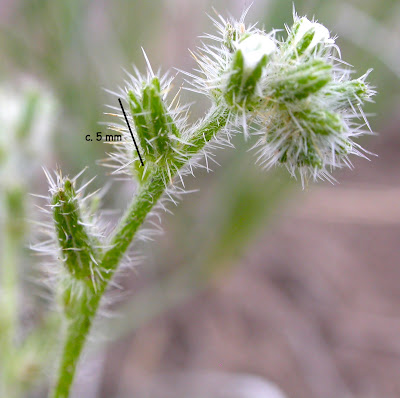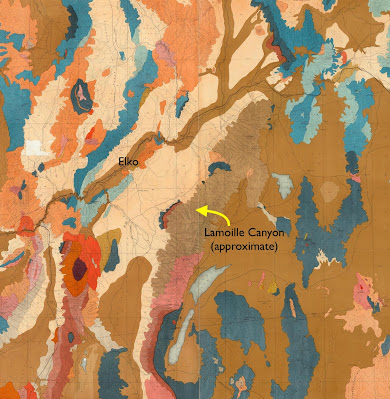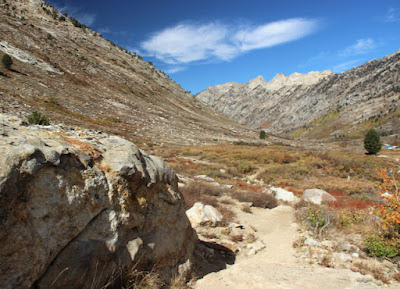 |
| Common borage, Borago officinalis. Click to view the coarse hairs (Andrey Zharkikh). |
For the past two years, roughly contemporaneous with the pandemic, I've been part of a group of botanists revising Vascular Plants of South Dakota by Theodore Van Bruggen. Such an honor, and I'm so happy to contribute! I've used this book since my arrival in the region 45 years ago, and it remains the only such resource available. Ours will be the fourth edition, the others having been done by Ted himself. He retired from the University of South Dakota in 1990, but still keeps an eye on South Dakota botany, at age 96.
The project began about ten years ago when botanists familiar with the state's flora divvied up the 126 plant families. Then some years later, there was a caesura of sorts, which lengthened into a fermata that was sustained until it threatened to become the Fine. So additional botanists were recruited, and families that had been "turned back in" were reassigned. That's when I joined the group.
Now I'm working on my 19th family. Some are very easy, with only one or two species (e.g. the Cattail Family). Others are nightmarish, like the one I'm doing now—the Boraginaceae, the Borage Family. But I've learned that whenever I start to stress over things like conflicting nomenclature, unreliable taxonomies, and elusive keys, it's time to step back and remember that we love plants. For one thing, if we look carefully, we will find something fascinating—like hairs.
"Boraginaceae" is derived from the name of one of its members, the herb borage. This is pronounced burrij, and is perhaps derived from from the Latin burra—a shaggy garment. Indeed many members of the Boraginaceae are shaggy, covered in coarse hairs. Up close, some are downright scary!
 |
| Hairs of Fendler's catseye, Cryptantha fendleri, become rigid and divergent with age (Matt Lavin; scale added). |
 |
| Madwort, Asperugo procumbens, sprawls and climbs with its retrorse hairs (and sticks to clothing) (Matt Lavin). |
 |
| Onosmodium molle has many names: O. bejariense, Lithospermum occidentale, false gromwell, marbleseed, stoneseed, and more. Its hairs are beautiful—long, somewhat bristly, not the least bit scary (Brian; cropped). |
 |
| Fringed puccoon or gromwell, Lithospermum incisum, has appressed stiff hairs, making it strigose (among botanists) (Andrey Zharkikh). |
The coarseness and rigidity of borage hairs is due to mineralization. As a hair develops from an epidermal (surface) cell, calcium and sometimes silica are added to the cellulose matrix of the cell wall. Often the result is a bit of prickliness. But in some cases the hairs are quite painful to touch. Notoriously so are the hairs of the viper's bugloss, Echium vulgare. They may cause dermatitis, including inflammation and itching, sometimes severe.
 |
| Viper's bugloss, Echium vulgare, has beautiful rich-blue flowers and demonic hairs (Matt Lavin). |
 |
| Zooming in on the viper's hideous stem. |
Though the borages are known for their shagginess, not all members of the family are hairy. For example, many of our bluebells (Mertensia spp.) are glabrous.
 |
| Mountain bluebells, Mertensia ciliata (Andrey Zharkik). |
 |
| Prairie bluebells, Mertensia lanceolata, has glabrous leaves with ciliate margins (click to view; Andrey Zharkikh). |
So now you know ... the next time you meet up with a member of the Borage Family, you must check out its hairs! But do be careful.
Sources
Barykina, RP, and Alyonkin, VY. 2016. Pubescence of vegetative organs and trichome micromorphology in some Boraginaceae at different ontogenetic stages. Wulfenia 23: 1–29.
Smith, AW. 1963. A Gardener's Book of Plant Names. Harper & Row, Book Club Edition.
Washington State Noxious Weed Control Board. 2015. Echium vulgare.


























